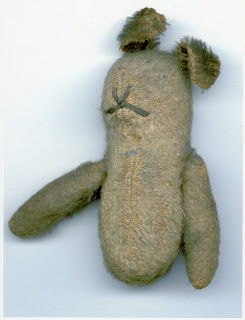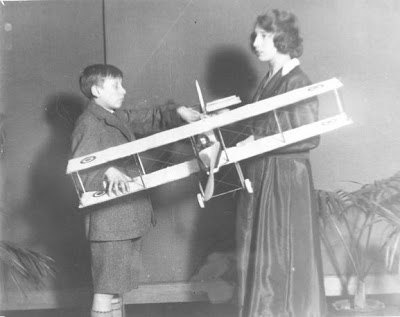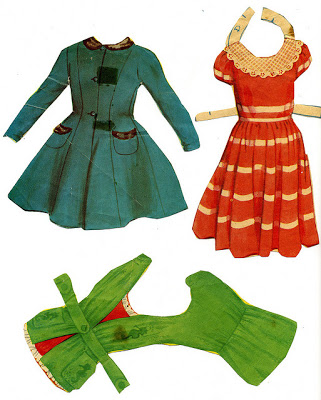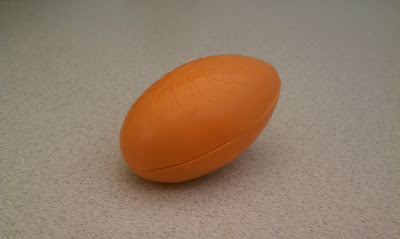 One of the most popular exhibits in the Canadian War Museum is a small, legless bear known simply as “Teddy.” During World War I, a little girl named Aileen Rogers sent the beloved bear to her father, Lieutenant Lawrence Browning Rogers, in a care package. Lieutenant Rogers died serving as a medic at the battle of Passchendaele, but Teddy was found in his pocket and returned to Aileen. Decades later Aileen’s niece Roberta found the teddy and a wealth of wartime letters in a briefcase. Roberta’s daughter Stephanie Innes set out to write the picture book A Bear in War about Teddy’s experience, and Teddy himself found his way to the Canadian War Museum.
One of the most popular exhibits in the Canadian War Museum is a small, legless bear known simply as “Teddy.” During World War I, a little girl named Aileen Rogers sent the beloved bear to her father, Lieutenant Lawrence Browning Rogers, in a care package. Lieutenant Rogers died serving as a medic at the battle of Passchendaele, but Teddy was found in his pocket and returned to Aileen. Decades later Aileen’s niece Roberta found the teddy and a wealth of wartime letters in a briefcase. Roberta’s daughter Stephanie Innes set out to write the picture book A Bear in War about Teddy’s experience, and Teddy himself found his way to the Canadian War Museum.
This touching story has inspired us to learn more about other famous wartime toys. What playthings gave children comfort while their fathers were overseas? What new toys sprang into life because of the war? Here is a list of our favourites from World War I and World War II:

Raggedy Ann
In the early 1900s, the United States was not a strong competitor in doll manufacturing. However, with toy production all but ceasing in Europe during World War I, the door was opened for American expansion into the industry. Johnny Gruelle, whose young daughter Marcella died tragically in 1915, secured a trademark for her doll “Raggedy Ann” and wrote a collection of stories about the doll, said to be tales he had once spun for the ailing Marcella. In 1918 the stories and the first hand-sewn dolls hit the Christmas market and a phenomenon was born.
Model Airplanes

Tyne & Wear Archives & Museum
Toy airplanes were not far behind their full-scale counterparts in gaining popularity during World War I. A 1915 ad for the Ideal Aeroplane & Supply Company read, “‘Ideal’ accurate Scale Drawings and Knocked down parts will enable you to EASILY build 3 ft flying models of those Aeroplanes now used in the European War. Students of Aeronautics, everyone with an inquiring turn of mind, should construct one of these fascinating models.”
Tinkertoys, Erector Sets, and Meccano

Popular Science Magazine November 1922
The 1910s were a time of change and discovery in engineering and industry, with World War I driving a constant stream of new developments. Complex building toys like the wooden Tinkertoys and metal Meccano and Erector Sets let kids get in on the excitement, inspiring the next generation of inventors and engineers.
The Slinky

Photo by Roger McLassus
In 1943 naval mechanical engineer Richard James was experimenting with springs, trying to develop one that could help stabilize a ship’s instruments. When he accidentally knocked one of his models off a shelf and watched it walk down a stack of objects to the floor, history was made. He and his wife Betty, who found the word “slinky” in the dictionary and thought it most appropriate, went into business. They sold their first 400 units within 90 minutes at a department store demonstration.
Cardboard Christmas Villages

Photo by Karen, Herminas Cottage
When metal and rubber became scarce, and every scrap of either was needed for the war effort, toys made of paper and cardboard experienced a renaissance. One popular toy of the 1940s, especially around Christmas time, was the printed cardboard house. Entire villages were available, and stores often created elaborate displays with toy trains running through them. In the United States many of these sets were emphatically stamped with “Made in U.S.A.” to differentiate them from the Japanese models that had been available before the war and were now widely shunned.
Paper Dolls

Photo by Megan Raley
Paper dolls were popular for the same reason as cardboard houses: they were made out of a material that was not being rationed and was not needed for the war effort. One Canadian company produced paper nurses, soldiers in a variety of uniforms, and model battleships that could be folded into shape.
Silly Putty

Photo by Elliot Harmon
During World War II Japan took control of many rubber-producing countries, leaving a rubber shortage in Western nations. American researchers attempted to develop a substitute and came up with a happy accident instead. Silly putty may not have contributed much to the war effort, but it was certainly a hit on the homefront, selling wildly in toy stores. And although scientists around the world failed to find a use for it in the 1940s, it did find a practical purpose later in life: Apollo astronauts used it as an adhesive to secure objects in zero-gravity.
Of course we could also talk about the ubiquitous lead soldiers and tin vehicles and cap guns, all of which flourished in a society where every child had war on his or her mind. We could also talk about the homemade toys that became more common as toy manufacturers became more scarce, especially in Europe. What about you? What wartime toys do you have stashed in an attic or displayed on a shelf? Let us know in the comments below.

